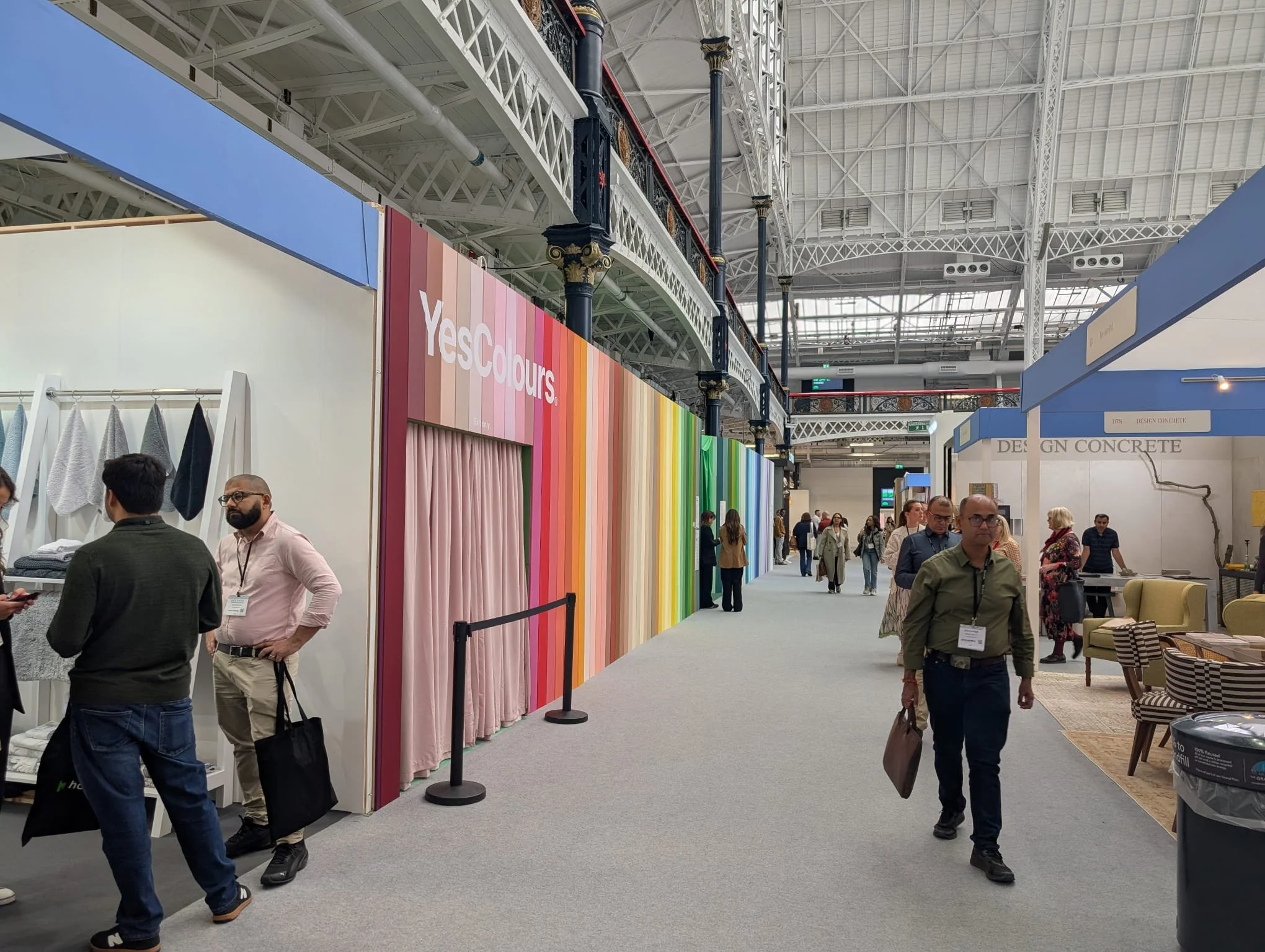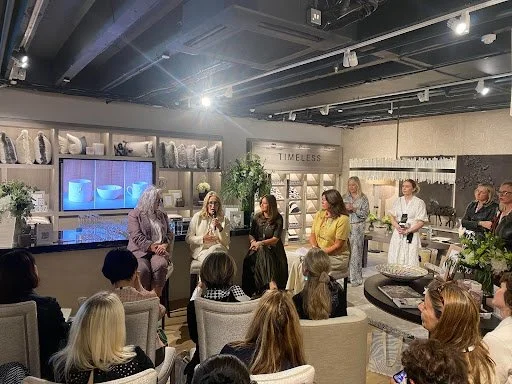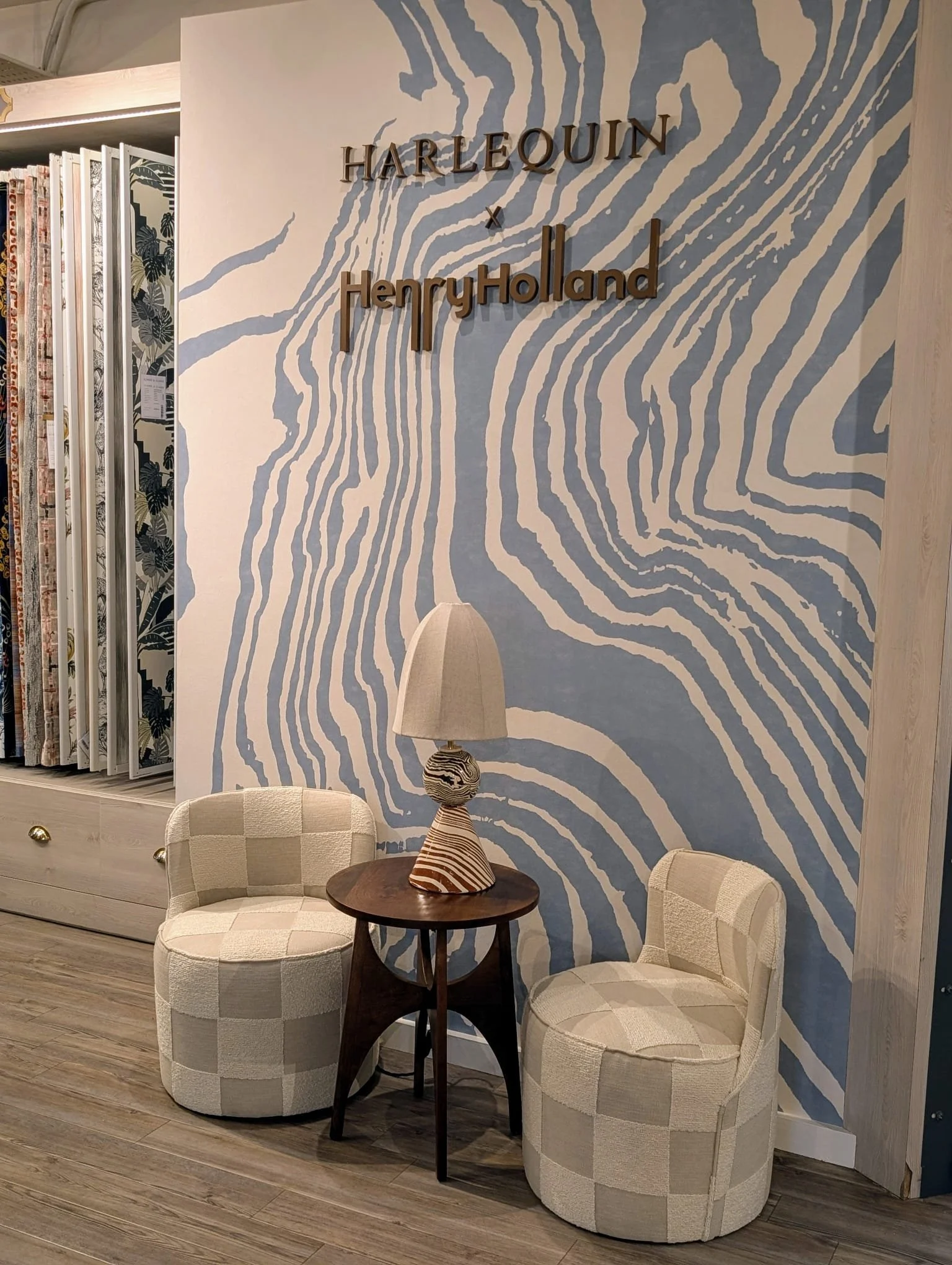Trade Show Marketing: The value of presenting your brand
There is no better way to communicate the story behind your brand, showcase new product collections, or hero your collaborations than in person.
We’ve spoken before about the rise in popularity, and PR successes of brand pop-ups in the interior design and architecture sectors, and touched on industry-specific trade shows as one of the many ways to get your brand in front of your target audience.
With the London Design Festival, Focus/24, and Decorex having all just wrapped up, we thought now would be the perfect time to delve more into the subject and explore the benefits of participating in trade shows as part of your wider marketing campaign. Can trade shows still compete in this ever-changing market? And can they maintain the quality of exhibitors to ensure high-profile brands and the right visitors keep returning?
What is a trade show? And how can brands get involved?
In essence, a trade show is an industry-specific event where businesses are encouraged to showcase products, introduce their brands and the services available, or present new innovations. These exhibitions usually feature brand-specific booths, a schedule of talks, various presentations, and live demonstrations offering a range of possible avenues for involvement.
In the design and architecture sector, the focus of booths tends to be on new brand collections, product collaborations, and/or the latest materials - all of which are presented to a targeted audience of buyers, designers, architects, retailers, press, and other industry-specific professionals. The shows serve as brand awareness marketing opportunities, marketplace stands for consumer and trade connections, and facilitate networking and the forging of new connections.
Stand displays aside, other avenues are available for brands to get involved. Sponsorship opportunities, speaking engagements, and collaborations with brands with a physical presence can help you make the most of industry events without committing to your own showcase.
How do you attract customers to trade shows?
Leading up to key events, including trade shows, targeted PR and content marketing campaigns can be designed to generate buzz both online and offline. By reaching out to key media attending or covering the event, you can amplify interest and promote your presence in magazines and online platforms. A digital countdown campaign can further boost anticipation, encouraging visits from your existing audience. We advise our clients to leverage both social media and newsletters to promote the event in the weeks leading up to the exhibit.
So why are trade shows so successful as marketing tools?
Trade shows are successful marketing tools for several reasons. They provide a unique opportunity to engage directly with existing and potential new customers, media contacts, and industry figures. These face-to-face interactions can foster relationships that go beyond mere transactions or brand promotions. They can lead to more loyal customers, increased brand engagement on social media, and a higher rate of word-of-mouth recommendations. Customers are more likely to recommend a product or service if they have met the team behind the business and understand its values. In-person meetings at trade shows are an effective way to build this network.
Also, interior design trade shows offer a chance to gather feedback on new ideas or prototypes. They encourage conversation between brands and attendees. Constructive criticism can refine product design and practicalities, while positive feedback can be the encouragement much needed ahead of any official launch dates.
For journalists, the chance to see new products in person is crucial. They may be required to speak about the materiality of the items if they are writing about the launch editorially. A photograph may be worth 1,000 words, but offering the opportunity to touch and feel the distinct fabrication of items alongside meeting with key figures in the business can be worth far more.
Image courtesy of Design Centre Chelsea Harbour
Trade shows are an important avenue for growth in brand awareness, positioning your business in front of a concentrated target audience that encompasses B2B and B2C - a mix of designers and interiors enthusiasts. For example, events at the Design Centre Chelsea Harbour or Decorex have a precise audience segmentation, with the vast majority actively engaged within the design and architecture industry. By attending or ideally showcasing at these events, brands are more likely to increase visibility directly to an audience involved in or interested in the sector. The breakdown of attendees is well-suited to allow plenty of networking and collaboration opportunities, leading to quality leads and increased sales.
Why should your marketing team attend trade shows?
Although crucial for fostering deeper relationships via face-to-face meetings, presence at design shows can also offer fodder for social media and digital marketing strategies. A synchronised effort across platforms - combining on-site promotion with a social campaign and email marketing will create buzz about your brand, maximising exposure in the run-up to (and during) the event. There are also opportunities to target digital media looking for news, trends and brand insights following each key design event in the calendar.
Each of these avenues allows those unable to attend the event to keep up to date with findings and any key brand announcements. This may increase your brand's web traffic and social media exposure. We will make the most of Instagram's features, including Lives, Stories, and Reels, so clients can document their visits.
Trade Show Successes This Season
Image courtesy of Hill House Interiors
Hill House Interiors’ co-founder Helen Bygraves spoke alongside Bee Osborn and Kate Watson-Smyth at Focus/24, providing anecdotes and practical insights for those considering growing and diversifying their business. The panellists were generous, sharing their personal stories - the ups and the downs - on navigating and overcoming challenges faced in the process of building their brands.
The collaborative spirit of Harlequin x Henry Holland, was previewed during Focus/24 in the Harlequin showroom and featured on The Design Club's main stage. Taking influence from his collection of ceramics, the new collection of fabrics is quirky, celebrating the joy of self-expression through bold use of colour and abstract motifs.
Harlequin x Henry Holland during Focus/24
A pop of colour from lighting brand Pooky at Decorex - clever exhibition stand design combined with placement amongst several more neutral brands ensured that Pooky’s selection of brightly coloured cordless lamps, a myriad of patterned lampshades, and bold range of mirrors grabbed visitors’ attention. Cheering!
Image courtesy of Decorex International
The influence of architecture on product design - was highlighted by Turnstyle Designs who launched a new hardware collection at Decorex, inspired by the work of Denys Lasdun. The strong, square detail of the base form takes heavy influence from the blocky forms, and monolithic shapes of his buildings.
Image courtesy of Turnstyle Designs
Proportion and harmony in design - an informative discussion between spokespersons from Plain English kitchens and Veere Greeney. Chaired by Emily Tobin, the conversation encompassed the importance of colour, balance, symmetry, and its effect on us in the home.
Various artistic movements from the 20th century influenced the design of a new collection from CTO Lighting presented at Decorex. From cubism to brutalism, new pendants, wall sconces, and lamps showcased elements of bold geometry and sculptural shapeliness.
CTO Chair Chris Turner also joined a panel discussion with Stephanie Turner from Arbor Communications, rug expert Jennifer Manners and Mirry Christie from B-Able on ‘Closing the Loop: What does Circularity mean for Interior Design’ to further increase brand awareness and enhance their brand story.
Bringing two new ranges to Decorex, lighting brand, Haberdashery, introduced Skies and Unearthed, two bold new concepts they have been developing. Drawing on nature as a sculptor, experimenting with ethereal forms and using light to play with the shapes suspended above their booth, they created an impactful and thought-provoking display.
Both Decorex and Focus have put more emphasis on craftsmanship and the importance of artisanal techniques than in previous years. Chelsea Harbour held a dedicated week’s celebration of contemporary craftsmanship within the Design Avenue, showcasing the work of the next generation of makers and encouraging engagement with independent artisans.
Decorex’s making spaces exhibition, in partnership with Fromental, showcased a range of craftspeople at work and highlighted the intense work and time that goes into each Fromental design. Both proved successful in drawing crowds of visitors, who were truly engaged by the work undertaken.
Conclusion
In conclusion, marketing at a trade show offers ample opportunity to boost in-person and digital brand awareness. Face-to-face meetings are proven to create the strengthened relationships that are key to brands in the long term, providing avenues to engage directly with existing and potential new clients, key figures in the media, and broader industry personnel. Increased networking will drive higher conversion rates and customer loyalty while opening up possible future collaborations. Businesses can also gather essential feedback on their brand and specific products and make amends as necessary in the future.
They also encourage a greater understanding of the industry generally, particularly of what competitors are doing and any learnings and successes that can be taken from this. Trade shows are where many key design trends emerge as well - keeping on top of these will help your PR and digital marketing strategies, offering fresh ideas for content. All in all, presence at key industry events encourages cross-platform engagement with the brand.
The challenge as we head into the 2025 schedule is for trade show organisers to continue to attract the right brands and therefore the right consumers (and vice versa) to make them viable. As the need for commercial success continues to put pressure on event organisers, this becomes ever more challenging.
However, with relatively few design-focused exhibitions that cover a wide range of offerings, now is the time to get the balance right and capitalise on the opportunities they can present both for brands and consumers alike.









